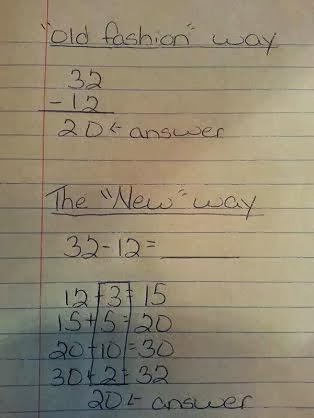Thankfully this year there is a reprieve on standardized testing in California. If there is one lesson learned while I was in Texas during our little testing hiatus last year, do not take this "gift" for granted. The accountability still stands, whether formal or informal. The math material covered in this school year plays a direct role in how successful a student will be next year. If you are noticing a slide now do all that is possible to stop the trend. As math builds upon itself, the slide will continue if not addressed as early as possible.

With spring officially here, school is in its homestretch and sooner or later some form of end of year assessment will take place. Encourage your student to learn from past mistakes to increase their success. Some teachers use a type of "Reflection Report" where the students have to categorize the type of mistake made to bring awareness to yourself so you do not go on repeating the same error. Once students have that "ah-ha" moment they tend to avoid making it again in the future. It is often eyeopening for kids to see how their scores were impacted by repeating the same type of error many times in a row.
For your student to benefit from their mistakes, it is best to reference old homework, quizzes and tests and track where points were lost. Did they out and out get the whole problem wrong because they are deficient in a concept? Did they rush and not really answer what was asked? Are their facts off? Did they lose a point here and there due to "not reducing" or "labeling" their units? Next time they prepare for a test, any test, have them consider the following:
Concept Mistakes: This is when your problem solving process is off-course. You may not understand or mix up the steps it takes to reach a solution. You are multiplying instead of adding, you forgot to take the reciprocal of a number, you aren't combining like terms, you needed to convert something first. Do I need to practice more of these types of problems or meet with a math tutor and have it retaught to me? If they struggle with adding or subtracting mixed numbers, chances are a quiz with ten of these problems will not go well.
Comprehension Mistakes: You are solving for the first part of the problem, but missing the second part in multistep problems. The question asks for which one is NOT but your answer solves for which IS. Make sure you reread the question to make sure your solution has an appropriate answer. Did I solve for the type of unit they are asking me for? Do I understand the vocabulary in the question so I know what I am supposed to do?
Calculation Errors: Did you forget to regroup? Did you not take your solution to its lowest terms as required? Were all like terms combined properly? Is my place value off because my writing was not aligned or slightly sloppy? Am I rushing too much? Many times the kids complete the process 100% correctly (the more difficult part of problem solving) but if their facts are off they will never get the right answer.
These details are the difference between grade they currently have and one that is a level or two higher for middle and high school students. In elementary school it is the difference between getting a 2 on the report card or a 3 or a 4. The details build confidence in a child's mathematical ability. For younger students in elementary math, their attention to detail leads to prealgebra and algebra success. Algebra success leads to higher scores in more complex math courses students take in high school.
At Mathnasium of 4S Ranch we build a students confidence by working with them on concepts they struggle with or introduce new concepts to broader their math world. We set up good habits from the start that ensure future success so kids go into their classrooms feeling prepared.
Click
here for the full article from Business Wire with an interview by Mathnasium founder and Chief Instructional Officer Larry Martinek.
Image retrieved on 3/19/14 from
here.




















